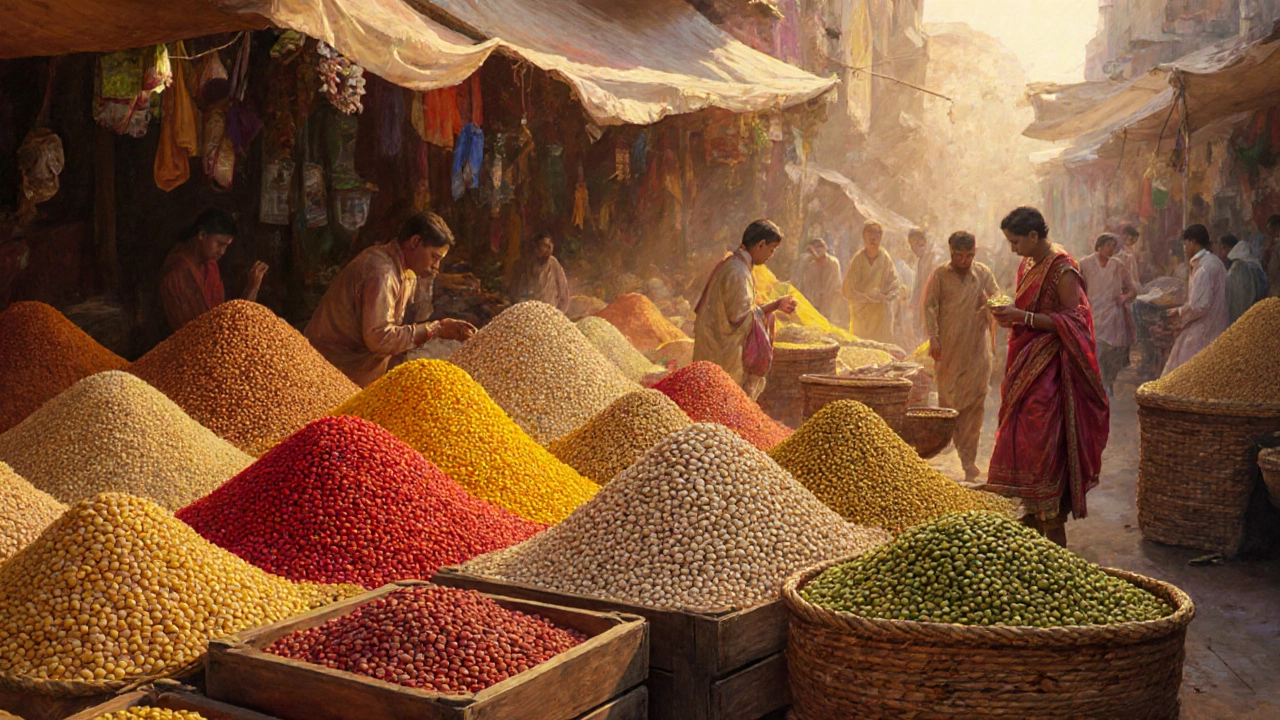Pulses: The Indian Kitchen’s Protein Powerhouse
When working with pulses, edible seeds of leguminous plants that include beans, lentils, and peas, widely used in Indian cuisine for their protein and fiber. Also known as legumes, pulses dal a collective term for split or whole pulses that are cooked into soups, stews, or side dishes and soaking the process of immersing pulses in water before cooking to reduce cooking time and improve digestibility form the backbone of everyday meals. They provide plant‑based protein, iron, and complex carbs, making them a staple for veg and non‑veg households alike.
One important semantic link is that pulses encompass dal, while dal requires soaking for optimal texture. Soaking pulses influences nutrient absorption; it breaks down anti‑nutrients like phytic acid, which otherwise hinder iron uptake. This relationship means that anyone aiming for a balanced thali should start with a proper soak, whether they’re preparing red lentils, split peas, or chickpeas.
Cooking methods vary across regions. In the North, whole urad dal is slow‑cooked in ghee for creamy dal makhani; in the South, split toor dal meets a brief boil and then tempering. Each method demands different water ratios – a typical 1:3 pulse‑to‑water proportion for stovetop, or 1:2 for pressure cooking. Understanding these ratios is a key skill that reduces trial‑and‑error and saves fuel.
Healthwise, pulses are a low‑glycemic food. A cup of boiled moong dal releases glucose slowly, helping maintain steady blood sugar. This makes pulses ideal for diabetics and anyone looking to avoid energy spikes. Moreover, the high fiber content supports gut health, reducing constipation and feeding good bacteria.
Beyond nutrition, pulses impact the environment. Growing legumes fixes atmospheric nitrogen, reducing the need for synthetic fertilizers. This eco‑friendly trait ties pulses to sustainable farming practices, a point often highlighted in modern culinary circles.
For beginners, the biggest hurdle is timing. Skip the soak and you’ll face uneven cooking – some beans stay hard while others turn mushy. The quick‑soak trick (boiling for five minutes then resting for an hour) fixes this without overnight planning. Pair this with a pinch of baking soda to soften tougher skins, but use sparingly to avoid flavor loss.
Practical Tips You’ll Find Below
Below you’ll discover step‑by‑step guides on soaking urad dal for dosa batter, exact water ratios for pressure‑cooked dal, and how to adjust spices for different pulse varieties. Whether you’re after a fluffy roti companion, a protein‑rich breakfast, or a hearty soup, the articles ahead cover the full spectrum.
Ready to master pulses? Dive into the collection and turn these humble seeds into the star of your next Indian feast.

Dal vs Lentils: Key Differences Explained
Learn the key botanical, nutritional, and culinary differences between dal and lentils, plus buying, cooking, and storage tips for each.
- Chutney Recipes (13)
- Healthy Living (12)
- General (11)
- Easy Indian Recipes (9)
- Chicken Curry Recipes (9)
- Paneer Recipes (8)
- Healthy Indian Snacks (8)
- Dal Recipes (7)
- Street Food (7)
- Dosa Recipes (7)
-
What’s Inside Major Grey’s Chutney? Ingredients, Flavor, and DIY Guide
13 Oct 2025 -
The High Cost of Paneer: Why This Delicious Cheese Carries a Price Tag
10 Jan 2025 -
Why Restaurant Biryani Tastes Different: Recipe Secrets Unlocked
6 Jun 2025 -
Basic Chicken Marinade Formula: Simple Ratio for Perfect Flavor
14 Oct 2025 -
Basic Chicken Marinade Formula: Simple DIY Recipe for Juicy Flavor
14 Oct 2025
29.09.25
Kaia Binari
0